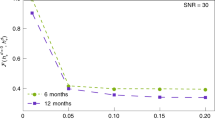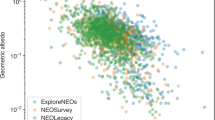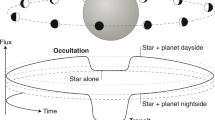Abstract
CubeSats are small satellites built in standard sizes and form factors, which have been growing in popularity but have thus far been largely ignored within the field of astronomy. When deployed as space-based telescopes, they enable science experiments not possible with existing or planned large space missions, filling several key gaps in astronomical research. Unlike expensive and highly sought after space telescopes such as the Hubble Space Telescope, whose time must be shared among many instruments and science programs, CubeSats can monitor sources for weeks or months at time, and at wavelengths not accessible from the ground such as the ultraviolet, far-infrared and low-frequency radio. Science cases for CubeSats being developed now include a wide variety of astrophysical experiments, including exoplanets, stars, black holes and radio transients. Achieving high-impact astronomical research with CubeSats is becoming increasingly feasible with advances in technologies such as precision pointing, compact sensitive detectors and the miniaturization of propulsion systems. CubeSats may also pair with the large space- and ground-based telescopes to provide complementary data to better explain the physical processes observed.
This is a preview of subscription content, access via your institution
Access options
Access Nature and 54 other Nature Portfolio journals
Get Nature+, our best-value online-access subscription
$29.99 / 30 days
cancel any time
Subscribe to this journal
Receive 12 digital issues and online access to articles
$119.00 per year
only $9.92 per issue
Buy this article
- Purchase on Springer Link
- Instant access to full article PDF
Prices may be subject to local taxes which are calculated during checkout



NASA/JPL-Caltech.
Similar content being viewed by others
References
Heidt, H., Puig-Suari, J., Moore, A. & Nakasuka, S. CubeSat: a new generation of picosatellite for education and industry low-cost space experimentation. In 14 th AIAA/USU Small Sat. Conf. 347–353 (The American Institute of Aeronautics and Astronautics, Utah State University, 2000).
Hinkley, D. in Small Satellites: Past, Present, and Future (eds Helvajian, H. & Janson, S. W.) Ch. 20 (AIAA, 2009).
Puig-Suari, J., Turner, C. & Ahlgren, W. Development of the standard CubeSat deployer and a CubeSat class PicoSatellite. In IEEE Aerospace Conf. Proc. Vol. 1, 347–353 (IEEE, 2001).
West, S. et al. LunaH-map miniature neutron spectrometer response over neutron suppressed regions. In 48th Lunar Planet. Sci. Conf. abstr. 2909 (2017).
Cohen, B. A. et al. Payload design for the lunar flashlight mission. In 48th Lunar Planet. Sci. Conf. abstr. 1709 (Committee on Space Research, 2017).
Helbing, K. et al. Acoustic properties of glacial ice for neutrino detection and the Enceladus Explorer. Preprint at https://arxiv.org/abs/1608.04971 (2016).
Klesh, A. INSPIRE and MarCO — technology development for the first deep space CubeSats. In 41st COSPAR Scientific Assembly abstr. B0.10-6-16 (2016).
McNutt, L., Johnson, L., Kahn, P., Castillo-Rogez, J. & Frick, A. Near-Earth Asteroid (NEA) Scout (AIAA, 2014); https://doi.org/10.2514/6.2014-4435
Achieving Science with CubeSats: Thinking Inside the Box (National Academies, 2016); https://www.nap.edu/catalog/23503/achieving-science-with-cubesats-thinking-inside-the-box
Bower, J. L. & Christensen, C. M. Disruptive technologies: catching the wave. Harvard Business Review (1 January 1995).
Thompson, S. E. et al. Planetary candidates observed by Kepler. VIII. A fully automated catalog with measured completeness and reliability based on data release 25. Preprint at https://arxiv.org/abs/1710.06758 (2017).
Huber, M. et al. The Pan-STARRS Survey for Transients (PSST) — First Announcement And Public Release 7153 (The Astronomer’s Telegram, 2015).
LSST Science Collaboration. et al. LSST Science Book, version 2.0. Preprint at https://arxiv.org/abs/0912.0201 (2009).
Knapp, M. & Seager, S. ASTERIA: A CubeSat for exoplanet transit and stellar photometry. In ESS/AAS Meeting 3 106.08 (American Astronomical Society, 2015).
Pong, C. M. et al. Achieving high-precision pointing on ExoplanetSat: initial feasibility analysis. In Space Telesc. Instrum. 2010 Opt. IR mm Wave Vol. 7731 (SPIE, 2010).
Kaaret, P. HaloSat — a CubeSat to study the hot galactic halo. In Am. Astronom. Soc. Meeting 328.03 (2017).
Wang, Q. D. et al. Warm–hot gas in and around the Milky Way: detection and implications of O VII absorption toward LMC X-3. Astrophys. J. 635, 386–395 (2005).
Henley, D. B. & Shelton, R. L. Is the Milky Way’s hot halo convectively unstable? Preprint at https://arxiv.org/abs/1401.8016 (2014).
Fleming, B. T. et al. The Colorado Ultraviolet Transit Experiment (CUTE): a dedicated cubesat mission for the study of exoplanetary mass loss and magnetic fields. In SPIE Conf. Series Vol. 10397 (SPIE, 2017).
Llama, J. & Shkolnik, E. L. Transiting the Sun: the impact of stellar activity on X-ray and ultraviolet transits. Preprint at https://arxiv.org/abs/1501.04963 (2015).
Llama, J. & Shkolnik, E. L. Transiting the sun. II. The impact of stellar activity on Ly-α transits. Preprint at https://arxiv.org/abs/1512.02998 (2016).
Shkolnik, E. et al. Monitoring the high-energy radiation environment of exoplanets around low-mass stars with SPARCS (star-planet activity research CubeSat). In Astrobiol. Sci. Conf. 2017 1965 (2017).
Dressing, C. D. & Charbonneau, D. The occurrence of potentially habitable planets orbiting m dwarfs estimated from the full Kepler dataset and an empirical measurement of the detection sensitivity. Preprint at https://arxiv.org/abs/1501.01623 (2015).
Miles, B. & Shkolnik, E. L. HAZMAT II: ultraviolet variability of low-mass stars in the GALEX archive. Astron. J. 154, 2 (2017).
Rugheimer, S., Kaltenegger, L., Segura, A., Linsky, J. & Mohanty, S. Effect of UV radiation on the spectral fingerprints of earth-like planets orbiting M stars. Preprint at https://arxiv.org/abs/1506.07202 (2015).
Tilley, M. A., Segura, A., Meadows, V. S., Hawley, S. & Davenport, J. Modeling repeated M-dwarf flaring at an earth-like planet in the habitable zone: I. Atmospheric effects for an unmagnetized planet. Preprint at https://arxiv.org/abs/1711.08484 (2017).
Racusin, J. et al. BurstCube: a CubeSat for gravitational wave counterparts. Preprint at https://arxiv.org/abs/1708.09292 (2017).
Farrah, D. et al. Review: far-infrared instrumentation and technology development for the next decade. Preprint at https://arxiv.org/abs/1709.02389 (2017).
Evans, P. A. et al. Swift and NuSTAR observations of GW170817: detection of a blue kilonova. Preprint at https://arxiv.org/abs/1710.05437 (2017).
Giguere, M. J. et al. A combined spectroscopic and photometric stellar activity study of Epsilon Eridani. Preprint at https://arxiv.org/abs/1606.08553 (2016).
Welle, R. P. & Hinkley, D. The Aerospace Nano/PicoSatellite Program (The Aerospace Corporation, 2014); http://go.nature.com/2DE3Wyr
Mason, J. P. et al. On-orbit performance and the first flight of the BCT XACT 3-axis ADCS. In 30th AIAA/USU Small Sat. Conf. 245–250 (AIAA, Utah State University, 2016).
Stiles, L. & Garrett, J. Development of deployable aperture concepts for CubeSats. In 51st AIAA/ASME/ASCE/AHS/ASC Struct. Structural Dyn. Mat. Conf. Vol. 2609 (AIAA, ASME, ASCE, AHS, ASC, 2010).
Cahoy, K., Marinan, A., Kerr, C., Cheng, K. & Jamil, S. in Space Telesc. Instrum. 2012 Opt. Infrared Millimeter Wave 84424F–84424F-11 (SPIE, 2012).
Underwood, C., Pellegrino, S., Lappas, V. J., Bridges, C. P. & Baker, J. Using cubesat/micro-satellite technology to demonstrate the autonomous assembly of a reconfigurable space telescope (aarest). Acta Astronautica 114, 112–122 (2015).
Nikzad, S. et al. Delta-doped electron-multiplied CCD with absolute quantum efficiency over 50% in the near to far ultraviolet range for single photon counting applications. Appl. Opt. 51, 365 (2012).
Lazio, T. J. W., Shkolnik, E., Hallinan, G. & Planetary Habitability Study Team. Planetary Magnetic Fields: Planetary Interiors and Habitability (Keck Institute for Space Studies, 2016).
Jones, D. et al. The astronomical low frequency array: a proposed explorer mission for radio astronomy. In AGU Monograph Series Vol. 119, 339–349 (American Geophysical Union, 2000).
Banazadeh, P. et al. Feasibility analysis of XSOLANTRA: a mission concept to detect exoplanets with an array of CubeSats. In Proc. 2013 IEEE Aerosp. Conf. abstr. 51 (IEEE, 2013).
Lucchetta, G., Berlato, F., Rando, R., Bastieri, D. & Urso, G. Scientific performance of a nano-satellite MeV telescope. Astron. J. 153, 237 (2017).
Handler, G. et al. The BRITE-constellation nanosatellite space mission and its first scientific results. Preprint at https://arxiv.org/abs/1611.02161 (2016).
Baade, D. et al. Short-term variability and mass loss in Be stars - I. BRITE satellite photometry of η and μ Centauri*. Astron. Astrophys. 588, A56 (2016).
Park, J.-P. et al. Mission Analysis and CubeSat Design for CANYVAL-X mission (AIAA, 2016).
Smartwout, M. CubeSat Database (St Louis University, accessed 16 February 2018); https://sites.google.com/a/slu.edu/swartwout/home/cubesat-database
Acknowledgements
E.L.S. wrote this Perspective in its entirety, but very much appreciated helpful comments from A. Dragushan, D. Jacobs and D. Ardila.
Author information
Authors and Affiliations
Corresponding author
Ethics declarations
Competing interests
The author declares no competing interests.
Additional information
Publisher’s note: Springer Nature remains neutral with regard to jurisdictional claims in published maps and institutional affiliations.
Rights and permissions
About this article
Cite this article
Shkolnik, E.L. On the verge of an astronomy CubeSat revolution. Nat Astron 2, 374–378 (2018). https://doi.org/10.1038/s41550-018-0438-8
Received:
Accepted:
Published:
Issue Date:
DOI: https://doi.org/10.1038/s41550-018-0438-8
This article is cited by
-
Near-ultraviolet photon-counting dual-comb spectroscopy
Nature (2024)
-
Snapshot averaged Matrix Pencil Method (SAM) for direction of arrival estimation
Experimental Astronomy (2023)
-
Electronics system for the cosmic X-ray polarization detector
Nuclear Science and Techniques (2023)
-
A novel design of a deployable CubeSat for material exposure missions in low earth orbit
CEAS Space Journal (2023)
-
In-orbit demonstration of an iodine electric propulsion system
Nature (2021)



